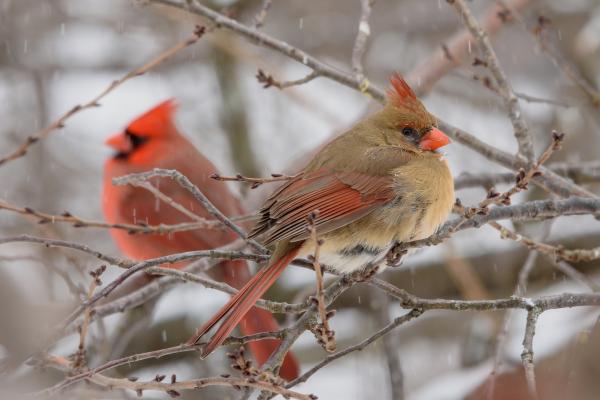Jarzyna study finds U.S. birds' Eastern, Western behaviors are polar opposites

Study analyzes avian cross-country biodiversity changes over a year
By Emily Caldwell, osu.news.edu
There is much more to avian biodiversity in the United States than the number of different species living in a given region or community, but the diversity of birds’ ecosystem contributions – assessed through measures of their diet, body structure and foraging methods – are much tougher to study.
And with hundreds of species migrating south for the winter and north for summer breeding, birds’ ecosystem function patterns change over space and time – creating a serious analytical challenge.
But two scientists from The Ohio State University have established what could be considered a baseline map of annual avian functional and species diversity patterns in the U.S., logging 11,000 code-running hours at the Ohio Supercomputer Center to produce their findings.
And what they found was a stunner: Functional diversity patterns in the West, where species and functional richness are both highest during the breeding season, are the polar opposite of what is seen in the East, where functional diversity is lowest when species richness is high. That pattern in the East is particularly puzzling because it means the overall diversity of birds’ ecosystem contributions are highest when a huge number of migratory species are gone.

“This tells us that, probably, migratory birds in the East versus the West have very different functional contributions to assemblages,” said lead author Marta Jarzyna, assistant professor of evolution, ecology and organismal biology at Ohio State.
“It suggests that resident birds in the East have a wider array of functional characteristics than migratory birds, and in the West, it’s the opposite: Migratory birds contribute more to functional richness than resident birds.”
Jarzyna, also a core faculty member in Ohio State’s Translational Data Analytics Institute, completed the study with James Stagge, assistant professor of civil, environmental and geodetic engineering at Ohio State. The study was published Feb. 22 in the journal Current Biology.
The researchers used 2019 data from the Cornell Lab of Ornithology’s eBird Status and Trends, which provided seasonal abundance estimates for over 800 species. Beyond quantifying species richness, Jarzyna and Stagge also incorporated four characteristics to derive estimates of functional diversity: birds’ body mass, diet (ranging from bugs and rodents to nectar and seeds), foraging niche (in or near water or the ground, or in spaces among or above trees) and activity time, at night or during the day.
The collaboration with Stagge was key to incorporating the passage of time, Jarzyna said: As a hydrologist studying climate data, he was proficient in research techniques used to analyze seasonal variations.
Scientists have known for some time that knowledge of the functional richness birds bring to their communities tells us much more about biodiversity than a simple count of resident and migrating species, Jarzyna said.
“Different species obviously have different characteristics and different traits, and contribute in different ways to the community composition and ecosystem functioning,” she said.
“You can have 10 species in a community that just eat seeds, or 10 species in a community, five of which eat seeds and five of which eat insects. The community with more diverse attributes will have more functional diversity, even though in terms of species richness they might be exactly the same.”
To date, efforts to describe avian functional diversity have tended to focus only on one breeding season at a time – a summer in the Northern Hemisphere. This study is the first to take species and their traits’ differences into consideration as their abundances change across the country over all 12 months of a year.
By determining that functional diversity patterns in the East and West differ so dramatically, the researchers now have a much better handle on what is going on across the seasons – but lots of questions remain about why.
“Why is it in the East that in the winter, when we are seeing so many species leaving those regions, we see an increase in functional richness? It didn’t make a lot of sense that you would gain this other dimension of diversity while losing something else,” Jarzyna said. “It’s not the case in the West, where we are seeing both the highest species richness and highest functional richness in the summer.”
Though one could surmise that topography or climate have something to do with these differences, Jarzyna said there is no way to know for sure without further study.
“We still don’t even know about individual species’ contributions to functional diversity and whether there is, indeed, a difference between migratory and resident birds,” she said.
Having a better understanding of how functional diversity among birds – and other species – changes over space and, the researchers noted, time, in particular, is needed to inform forecasting, conservation and management of biodiversity.
“I would argue that we can’t conserve anything if we don’t understand where it is and what it is,” Jarzyna said. “It’s the first step to telling us, ‘this is what we’ve got, and this is how it’s changing.’ What we are going to do about it is the next step.”
This work was supported by the National Science Foundation and the Byrd Polar and Climate Research Center at Ohio State.
